Of all the product lines offered by stalwart manufacturer Safari Ltd, the “Toob®” line gives them the freest rein to explore unusual taxa. I’m personally fondest of the Toobs that furnish small versions of small animals that might scale well with Safari’s full-size figurines. We’ve reviewed some of their most interesting Toobs featuring “alive” animals here, here, here, here, and here. Today we’ll look at the most phylogenetically diverse prehistoric Toob that Safari has ever produced: the Ancient Fossils Toob. This Toob features ten different hand-sculpted plastic reproductions of fossils from across the Phanerozoic.
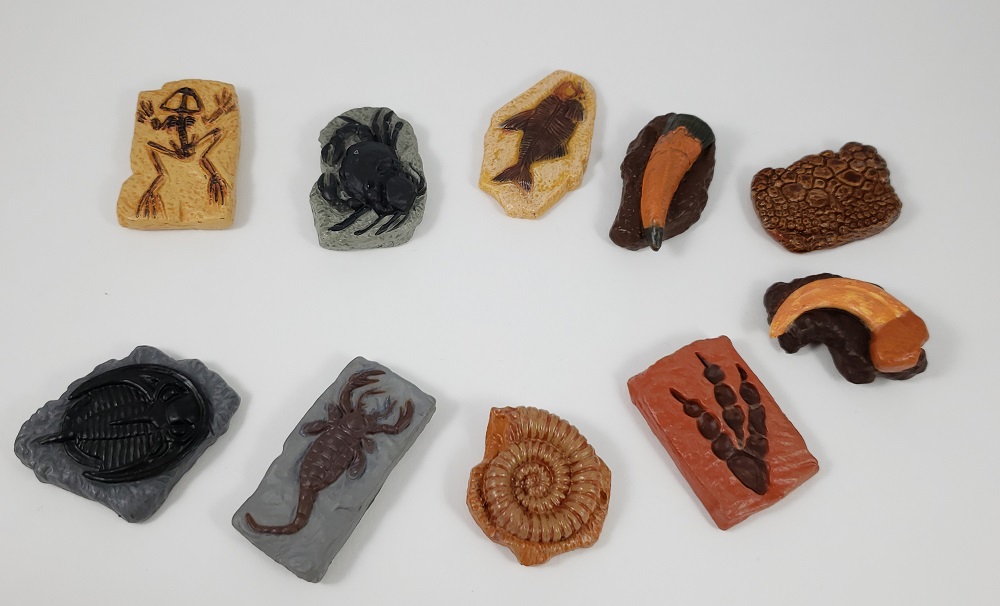
Let’s start in the Ordovician with this little trilobite. Whereas the toy itself is stamped underneath with just “trilobite,” the packaging identifies it as Raymondites, and in fact this is a pretty reasonable representation. Sure, the eyes are a little too big, and the cephalon lacks some texture that is usually present in fossils, but the long genal (cheek) spines and pygidial (tail) spine make it a sure bet for Raymondites or maybe Bathyurus. This or some other trilobite is a necessary element in a Toob with this theme, although oddly, now that the Cambrian Life Toob is discontinued, this is the only trilobite in production by Safari.
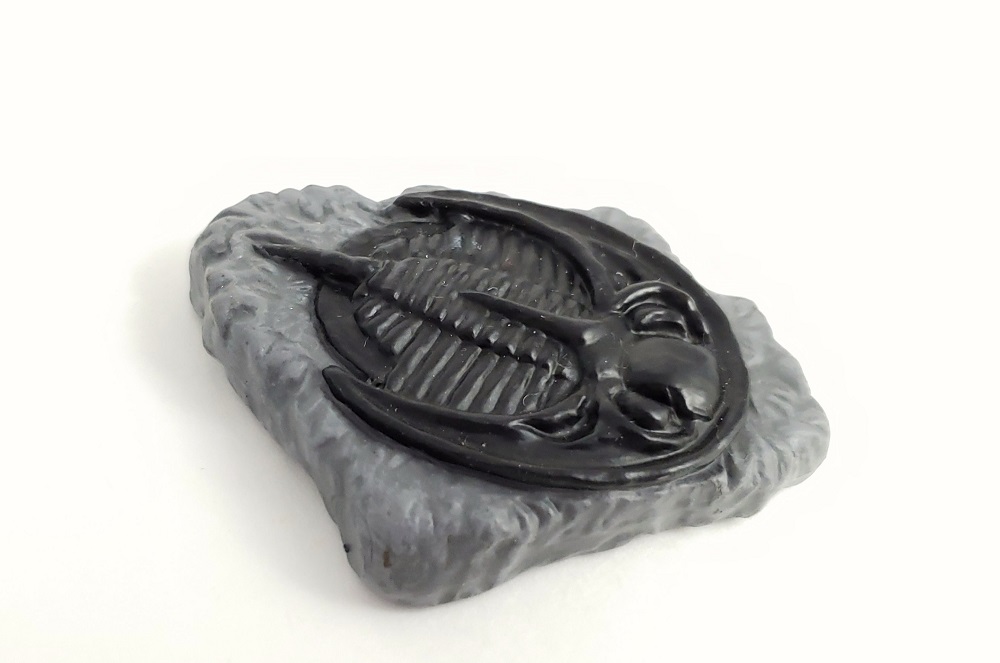
Giant eurypterids (“sea scorpions”) marauded the seas of the subsequent Silurian period. Safari includes a Mixopterus, a genus that could reach 75 cm in length (obviously, these figurines are not to scale with each other). This replica seems to be missing one of the pairs of short legs between the paddlelike rear legs and the large grasping anterior legs, but you could plausibly say they’re just underneath the other legs and don’t show. It otherwise looks pretty accurate, and is somehow the only eurypterid Safari has ever made!
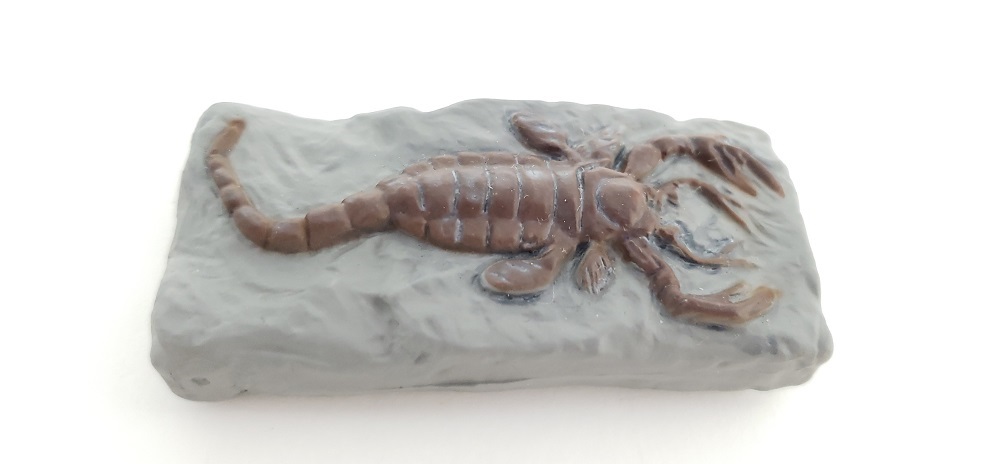
Now on to the Mesozoic, where we find the shell of an ammonite, another obligatory inclusion. For most ammonites, these shells are all that’s known. This one is the Jurassic Peltoceratoides. You can definitely see what they were going for here, but to my eye it looks less like an ammonite and more like the coiled-up end of a segmented worm. It doesn’t have the nice texturing that Safari’s other ammonite figure does, but of course it’s much smaller. In any event, if they hadn’t told me, I would have found it quite impossible to tell that this was intended as a Peltoceratoides.

The Toob also includes this dinosaur footprint, which makes perfect sense, and unlike a small ammonite or trilobite, can’t be had in actual stone for cheap at a mineral show. This one is identified as Anchisauripus, an ichnogenus which, although you might think it related to the early sauropodomorph Anchisaurus, actually represents a theropod print. It looks to me like a decent representation of a standard three-toed theropod footprint, and would definitely be useful in teaching youngsters about different ways that fossils form.
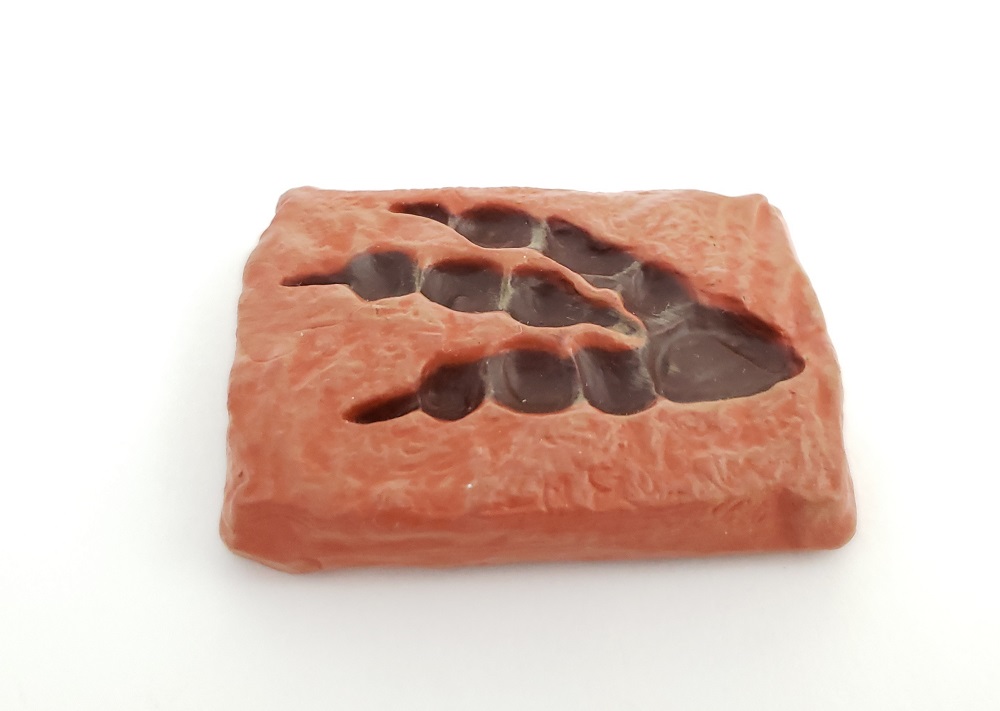
So that kids can channel their inner Alan Grant, this Toob includes a dromaeosaur claw (just “raptor claw” printed on the bottom). Oddly, this is one of the only pieces not identified by name on the paper insert, although it references Mongolia, making it clear it’s supposed to be Velociraptor (although it gives a slightly incorrect age). The claw looks okay, including the groove (like the fuller of a knife, it reduces weight without sacrificing strength), although it’s not clear to me why the proximal end is rendered in a different color.
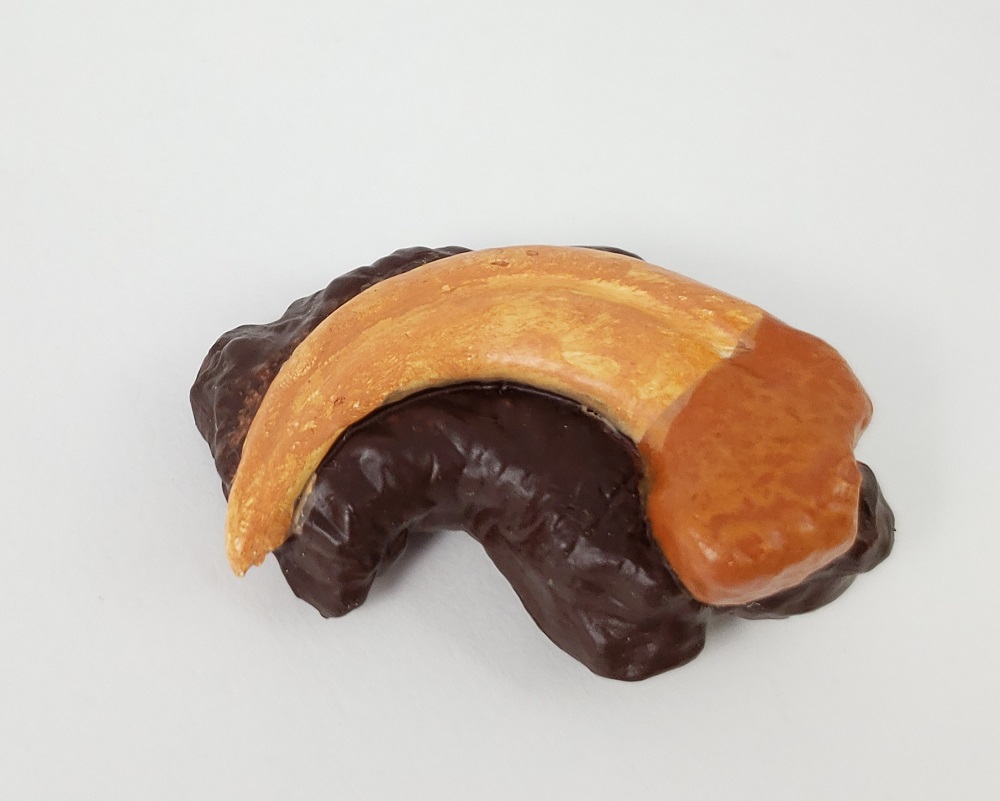
Another one you can’t do without: a Tyrannosaurus tooth. It’s a little difficult to photograph, but it includes minute serrations on both the fore and aft edges of the tooth. It begins to taper maybe a shade too far from the tip of the tooth, but it’s not bad all things considered.

Another Cretaceous dinosaur artifact: a patch of hadrosaur skin! With its location given as North Dakota and its age as 65 million years, this seems pretty clearly to refer to “Dakota” the Edmontosaurus, famously preserved as a mummy complete with skin. Like the real Dakota, it shows reticulated scales of mixed sizes. I think this is a cool thing to include, but somehow I think a lot of kids would find it boring. I try to spend as little time around children as possible, but if you have a kid please leave a comment below, I’m curious what they think!
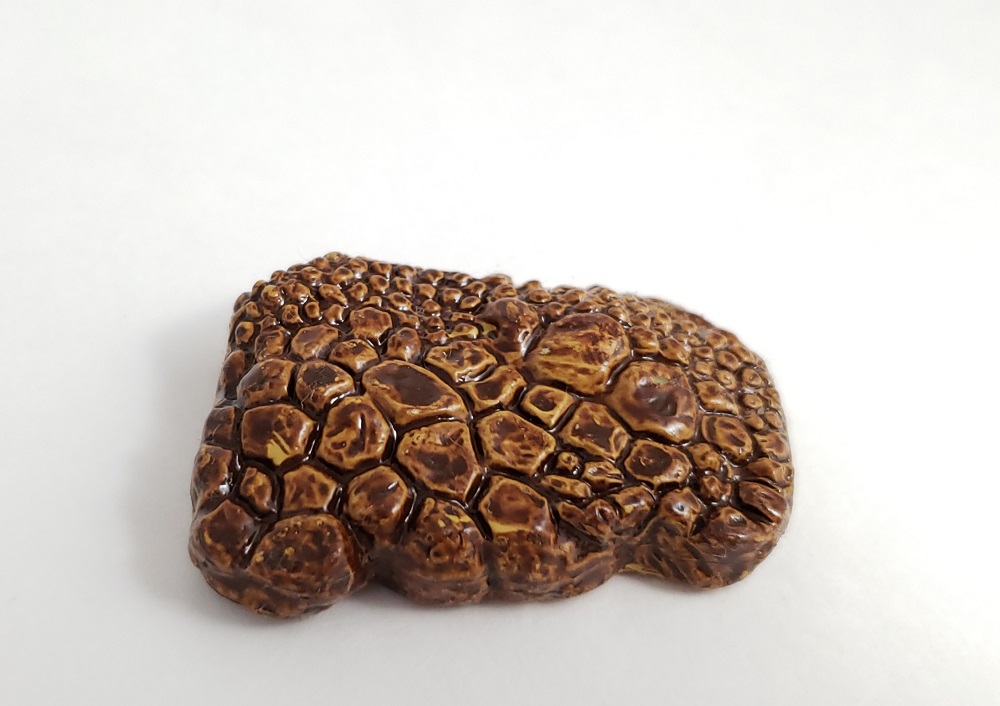
Diplomystus was a freshwater fish related to herrings that first appeared in the Cretaceous, but its fossils are most common in the Eocene (early Cenozoic), especially the Green River formation in Wyoming. It would have looked a little like a modern crystal tetra (genus Roeboides) except larger, less transluscent, and with slightly different fins. This figurine really looks a lot more like the more thoroughly herring-like Knightia that lived alongside Diplomystus. It’s missing the pelvic fins and most of the opercular (gill cover) bones, although the latter sometimes broke off before preservation so might be excusable.
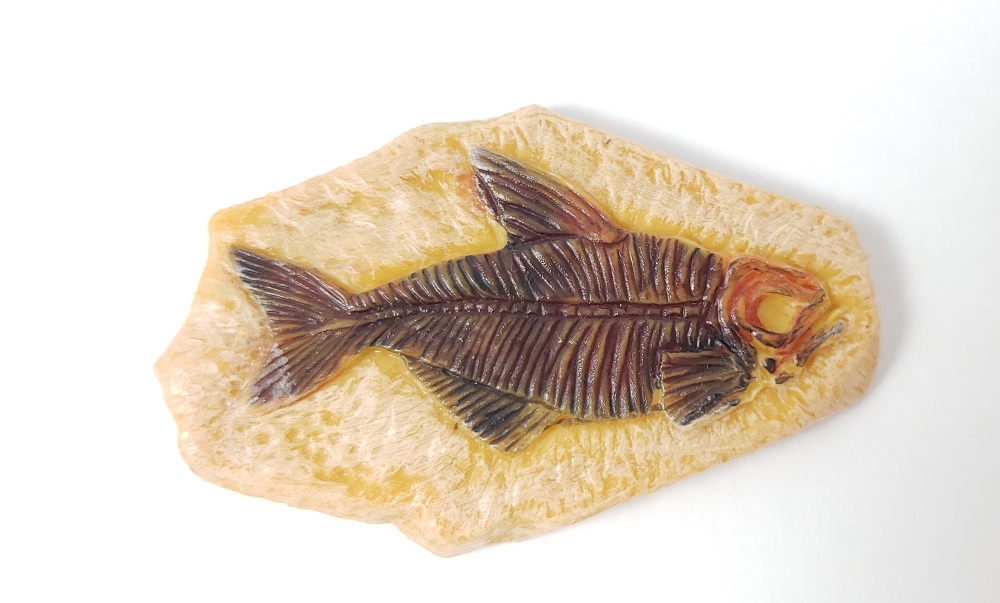
Also from the Eocene, here’s a fossil frog. Safari identifies it as Eopelobates, a relative of the modern European spadefoot toad (but not as close to the American spadefoot toad now found in Wyoming where Eopelobates lived). This figurine looks roughly froglike, although it has the wrong number of hind toes and the skull is pretty simplified. Pretty good Green River companion piece to the fish above.
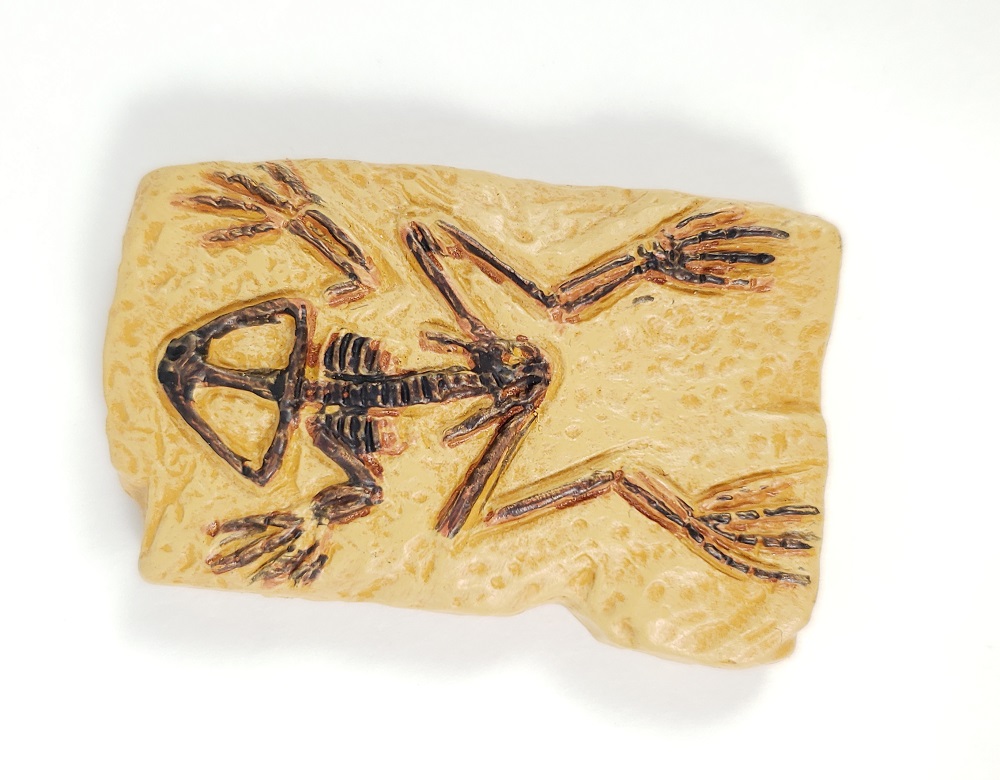
Finally, we have these “giant crabs” from the Eocene. Safari identifies these as Pulalius. Maybe there are some exceptional specimens that I don’t know about, but every Pulalius I’ve seen easily fits in a person’s hand. Even modern relatives like the spotted reef crab get bigger. Whether the descriptor “giant” is deserved or not, this is a cool figurine. The two crabs are preserved together with a good amount of three-dimensional relief, and whereas not all the legs are visible, it’s definitely possible to explain it away as their being tucked underneath. With this and others, small missing body parts might just be a compromise of miniaturization.
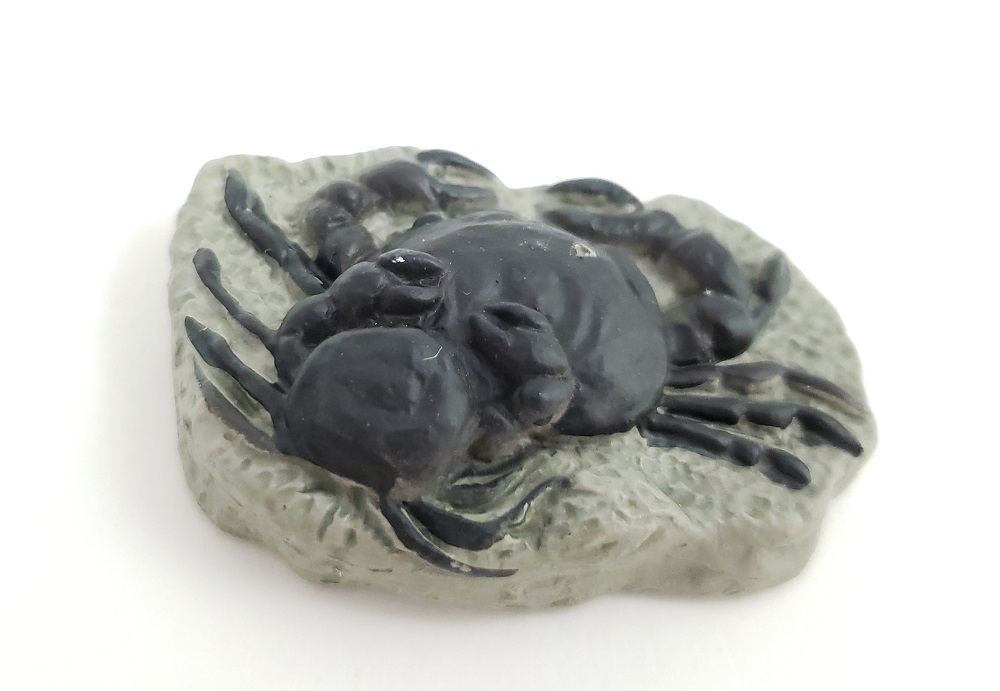
This single Toob represents every prehistoric arthropod, every prehistoric amphibian, every prehistoric actinopterygian, and half of all the prehistoric mollusks in Safari’s current portfolio. Safari has plenty of room to expand! I’d love to see living versions of some of these animals, even in the same scale, which would be great for dioramas. This Toob isn’t really geared for dioramas, but it strikes me as a pretty solid educational tool. The anatomy is close enough, and the variety is hard to beat (although maybe I’d have added an Archaeopteris leaf). I’d recommend this set on that basis, and here’s hoping that in the future Safari has more Toobs for us!
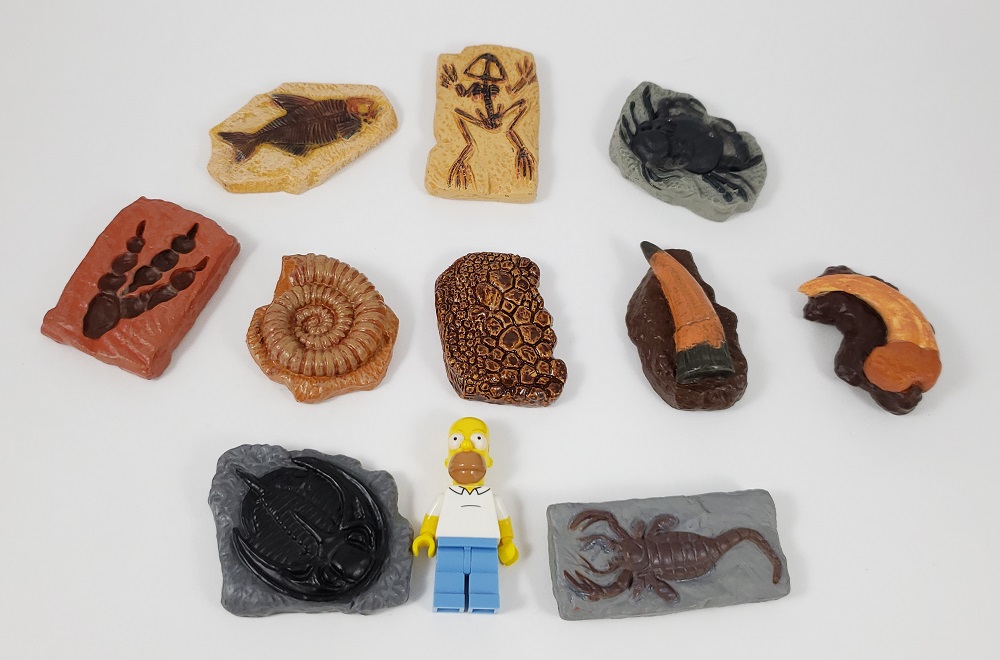
Disclaimer: links to Ebay and Amazon on the DinoToyBlog are affiliate links, so we make a small commission if you use them. Thanks for supporting us!




I bought this last year and got a paint job similar to what Duna describes. Frankly, the paint job is really bad. it’s probably the worst paint job I’ve seen on Safari figures. The fish, frog, and crabs in particular look lousy with just a splotchy single-color wash (and the colors are completely wrong for the formations) – they don’t stand out at all.
The sculpts are good and I was planning to repaint anyway, but it’s rather disappointing.
Sorry to hear that. Figures by Safari and other companies do tend to get worse paint jobs after their inaugural runs, and the Toob figures get it especially bad.
I bought two weeks ago and the aspect and painting of the fossils is totally diferent:
Ammonite = same
Trilobite = Rock is light sand color, trilobite black.
Scorpion = Rock is light sand color, scorpion dark grey.
Frog = Rock and fossil are the same color, light brown.
Fish = Same as the frog, but darker.
T rex tooth = Rock and tooth are sand color.
Footprint = Rock and footprint are dark sand color.
Skin = Same as footprint.
Crabs = Rock and crabs are grey color (sand with grey brush).
Velociraptor claw = Rock is light sand color and claw is the same color as in the article.
Nice. When I bought my TOOB, the trilobite was specifically identified as Raymondites. However it appears that Raymondites is now a synonym, or possibly a subgenus, of Bathyurus. So either call is a safe bet :).
Sorry I misread the original post where you indicate yours was also marketed as Raymondites 🙂